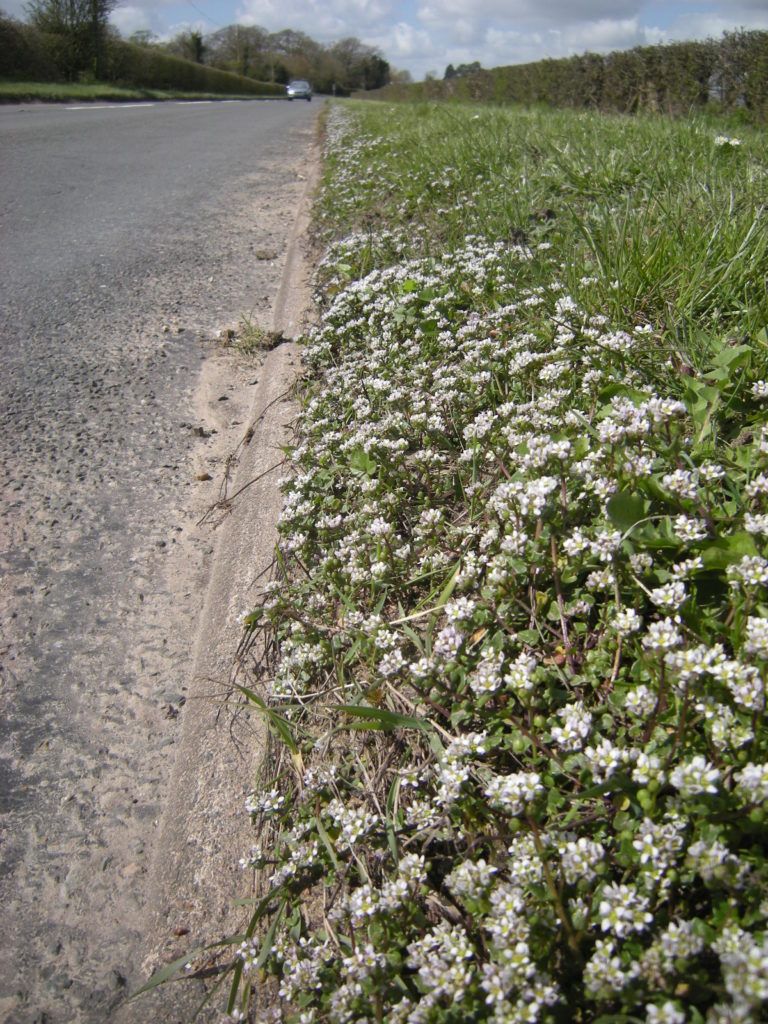In 1989, a new plant was discovered on the M50 highway in Worcester, England. It's Cochlearia Danica, also known as Danish scurvygrass, a tiny weed in the family Brassicaceae, first described by Linnaeus more than 200 years ago. Full of Vitamin C, it got its name from the sailors chewing it to cure scurvy, but who would get scurvy these days?
No one cared about this discovery or expected its becoming the fastest-growing plant throughout Britain. From 1989 to 2002, in Worcestershire alone, its population area extended to 427 kilometres, equivalent to a speed of 3.5 meters per hour. As an immovable creature, this expansion rate was magnificent.
Although this kind of grass originally existed in Britain, it only grew on the beach before. With no precedent, such an expansion got a lot of attention, primarily because of a peculiar fact. The grass only extended along the sides of the road as if following people's footsteps and wheels.
Researchers soon realized that it was all because of salt.
Danish scurvygrass is a coastal plant, and its long-term contact with the sea has evolved its salt tolerance. However, because of us, a new source of salt had emerged. Over the past few decades, people had sprayed vast amounts of snow-melting agents on roads, including tons of salt, which infiltrated the soil around these roads. The salinized land was no longer suitable for general plants, yet unexpectedly becoming similar to the beach saline land, leading to its discovery by Danish scurvygrass.
Maybe we shouldn't use the word discover as its seeds just accidentally floated here, probably because of the vehicle's carrying. But if the grass also perceives the world like we do, for them, the soil on the roadside is a promised land, the traffic is a whaling whale, and the salt sprayed by the snowplough is the sea waves pilled up. In the eyes of Danish scurvygrass, the man path is the new sea.
Who knows, we might just grow on the roadsides of the universe like the weeds do.
Chris Myers, Sally Eaton, and Trevor Dines (2012). The Wild Things Guide to the Changing Plants of the British Isles.

